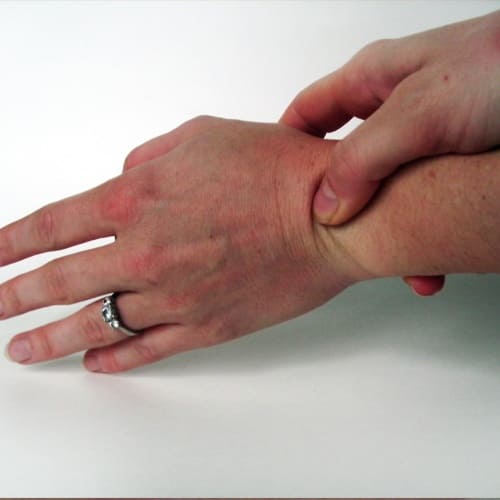
Eliminating Pain without Narcotics and Other Pain Medications
Pain is the single most common health issue people experience. According to the American Academy of Pain Management, chronic pain (pain that lasts over three months) afflicts almost a third of our population. The most common treatment for pain has been narcotic medications, but the over use of these substances has lead to the Opiod Crisis that has become a major concern in our country.
Pain killing drugs, including narcotics, though useful and necessary at times, should not be relied on as a permanent solution for chronic pain and are best used for shorter time periods until the cause of a person’s pain is corrected. Prescription narcotics in particular are addicting and can be dangerous, being responsible for more drug related deaths than heroin and cocaine. Another problem with narcotic medications is that the body often rapidly develops a tolerance or resistance to these medications, decreasing their effectiveness.
So what can be done for chronic or acute pain?
Alternative Pain Therapies:
There are effective natural pain therapies that work by correcting the cause of the pain and not just blocking the pain signals. In our office we may use any of the following tools, depending on the particular case. We have found that correcting the cause of the pain is much more effective and desirable than only blocking the pain signals the body is generating with narcotics and other chemical pain killers.
When a patient comes to our office because of pain, they are carefully evaluated before any treatment begins. We review your personal medical history, family health history, past treatments, dietary practices and life style factors. A physical and neurological examination and, in many cases, laboratory evaluation and testing are also used. It is important to determine if your pain is caused by an autoimmune problem, a biochemical imbalance, a mechanical dysfunction, a loss of integrity of your support tissues such as the ligaments or some other cause. Knowing this, will determine the course and nature of your treatment.

Chiropractic: Dr. Redd provides chiropractic therapy for muscle and joint pain and pain issues related to faulty nervous system function. You can read more about chiropractic by clicking here.
Biopuncture: Developed by Dr. Jan Kersschot, MD and involves the injection of natural homeopathic medicines into acupuncture and other body points to bring about healing. Biopuncture is effective for the following conditions.
Sports Injuries Achilles tendiopathy Muscle Strain Ankle Sprain Tennis and Golf Elbow |
Musculoskeletal _____Pain___ |
Inflammation |
Allergy Problems |
Headaches |
Acute sprains may heal in half the time with Biopuncture. Biopuncture is safe even during pregnancy. Biopuncture has been featured on the Dr. Oz show. You can get more information about Biopuncture on the internet.
Triggerpoint Therapy:Brought to the United States by Dr. Janet Travel, MD. Dr. Travel learned this important treatment method from doctors in Germany. Trigger point therapy is part of Neural Therapy. Trigger points are tiny knots that develop in a muscle when it is injured or over worked. They frequently are the cause of headaches, neck and jaw pain, back pain, joint pain, tennis elbow and carpal tunnel problems. Trigger point therapy may be done by hand or by injection of a local anesthetic like procaine or lidocaine.
Neural Therapy: Begun in 1925 by two German medical doctors. It involves the injection of Procaine or Lidocaine, that act to normalizes the function of the nerves. These injections are given into various, but very specific, body areas. Neural Therapy is based on the theory that trauma can product long-standing disturbances, or “interference fields”, in the electrochemical function of tissues. These fields disrupt the normal transmission of electrical impulses and the function of the nerve fibers in the body, leading to pain and other health problems. The types of tissues affected by trauma include scars, nerves and nerve clusters. A Neural Therapy injection can instantly and lastingly resolve chronic pain.
Prolotherapy: Also known as "proliferation therapy," or "regenerative injection therapy". It was invented by Dr. George Hackett in the 1940's and was further developed by Dr. Gustav Hemwall, who joined him in the 1950's. Prolotherapy is based on the theory that chronic pain is often caused by laxness of the ligaments that are responsible for keeping a joint stable. When ligaments are damaged they often generate pain.
Prolotherapy is performed by injecting damaged ligaments with natural substances such as procaine or lidocain (anesthetics), dextrose, special homeopathic medicines and other substances, to help regenerate the loose and damaged connective tissues. This results in a permanent resolution of the related pain. Prolotherapy is often an effective alternative to surgery and should be considered for any chronic joint pain problem.
Functional Medicine: It is very common for patients who have chronic pain as part of their clinical presentation at our clinic, to experience a complete correction of the pain during their treatment for other non-pain health issues. This is because a great deal of pain is due to inflammation, lymph congestion and other functional problems that are common to other health problems we treat. When the patients body is brought back in to proper physiological function, those dysfunctional factors that can cause pain are also often resolved.
- Laxity or looseness of a tested joint that fails to heal on its own
- Old sprain injuries that are unstable or painful, or joints affected by arthritis
- Distinct tender points were tendons or ligaments attach to the bones
- Recurrent swelling of a joint or muscle area
- Popping, clicking, grinding or catching sensations in joints
- Temporary benefit from chiropractic or osteopathic manipulation or from any form of manual mobilization of a joint that fails to fully resolve or requires ongoing treatment to maintain its benefits
- Aching or burning pain that is referred into an arm or leg
- Recurrent headache, face pain, jaw pain, ear pain
- Chest pain with tenderness along the rib attachments on the spine or along the sternum (breast bone)
- Spine or joint pain that does not resolve with surgery, or the cause of which cannot be determined with regular examination methods, including x-ray, MRI and orthopedic or neurological evaluations.

